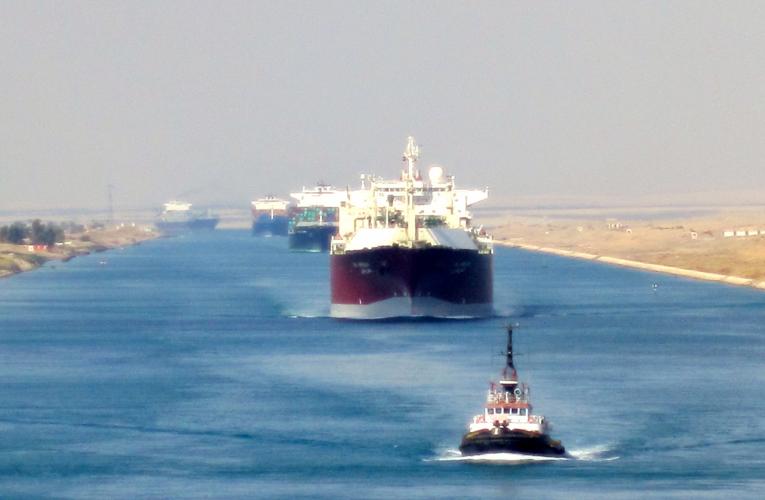Maritime chokepoints lead to shortages and higher prices
Duke University
New GIS-enabled analysis by a Duke University researcher maps what the far-reaching impacts to international trade and shipping could be if any of the world's 11 busiest marine chokepoints, or shipping straits, are closed due to politics, piracy, vessel accidents, or other causes. Knowing in advance what to expect will help businesses and governments better navigate unexpected closures and reduce disruptions to international trade and global supply chains.
When the mega container ship Ever Given ran aground and blocked
the Suez Canal for six days in 2021, it caused disruptions in international
trade for weeks and in global supply chains for months afterward.
The far-reaching impacts drove home how important the Suez Canal
and other marine chokepoints, or shipping straits, are to global economic
security and how blindsided and ill-prepared for a closure businesses and
governments can be.
A new analysis by a Duke University researcher should help.
"This study provides a forward look at the impacts that could result if any of the 11 busiest marine chokepoints was shut down because of geopolitical instability, piracy, marine accidents or other causes," said Lincoln F. Pratson, Gendell Family Professor of Energy and Environment at Duke's Nicholas School of the Environment.
Pratson used GIS data of global marine shipping lanes along with
international trade data from 2019 to simulate closure scenarios in the Panama
Canal, the Strait of Gibraltar, the English Channel, the Danish Straits, the
Bosporus Strait, the Suez Canal, the Bab el Mandeb Strait between Yemen and
East Africa, the Strait of Hormuz, the Malacca Strait between Malaysia and
Indonesia, the South China Sea, and the East China Sea.
The simulations allowed him to estimate not only the types and
amounts of trade that would be disrupted by each chokepoint's closure, but also
how the closure could lead to the redirection of trade flows globally.
"When international trade through one of these chokepoints
is impeded, transiting ship traffic gets backed up and subsequent shipping
often gets redirected along longer routes to avoid the blockage. This leads to
increased shipping times and costs," Pratson said.
"Ports that initially experienced lulls in cargo-handling
because of the closure become backlogged as the delayed cargoes arrive along
with ensuing on-time shipments."
The economic impacts of these changes can reverberate for months
as international supply chains for everything from electronics, vehicles, and
pharmaceuticals to crude oil and food are disrupted, and just-in-time delivery
of critical goods is no longer a bankable bet, he said.
"Having a pretty good idea of what to expect if there's a
prolonged closure of shipping in one of these 11 chokepoints would help
governments, businesses and seaport managers develop strategies for reducing
potential shipping and port delays or losses," Pratson said.
Cargo ships move about 80% of all international trade by volume
and about 70% of it by value. Much of this trade passes through one or more
marine chokepoints enroute to its destination. Pratson estimates that value of
trade through a number of these chokepoints, such as the Malacca Strait and South
China Sea, rivals the GDPs of the world's largest economies.
Furthermore, some chokepoints, such as the Danish Straits,
Bosporus Strait, Strait of Hormuz, East China Sea, and South China Sea, provide
the only access to maritime trade for a large number of countries.
If these chokepoints are shut down or if traffic through them is
reduced for a prolonged period, as has happened in the Bosporus Strait during
the war in Ukraine, the disruption can block or severely limit affected
counties' ability to import or export goods their economies and world markets
alike depend on. This can cause volatility in global supplies and prices and
spur a scramble by nations and businesses on both sides of the chokepoint to
secure alternative sources or markets for critical goods.
Other chokepoints, such as the Suez and Panama canals, provide
shortcuts between ocean basins that significantly reduce shipping costs and
times.
"The closure scenarios suggest that if chokepoints used to
move trade between the Atlantic and Indian oceans are closed for an extended
period of time, more shipping may be redirected towards the Panama Canal then
it can handle, which would end up causing a second source of shipping
congestion, cargo delays, further rerouting." Pratson said.
"Given that the operation costs of container ships have
been running around $2 million a day, having an idea of how closure of a
chokepoint could affect maritime trade globally should be useful information to
have in advance," he said.
Pratson published his peer-reviewed study Dec.21 in the
journal Communications in Transportation Research.
Funding for his study came from the U.S. Department of Defense Minerva Program.
